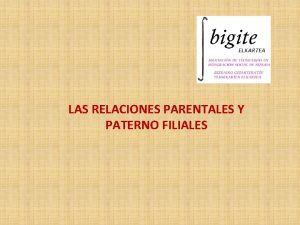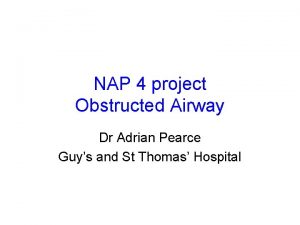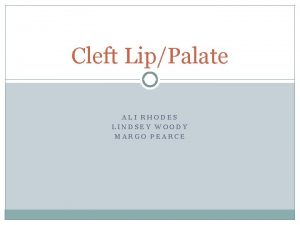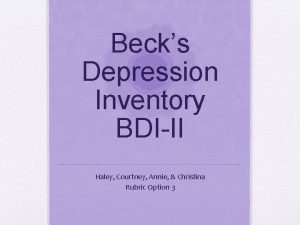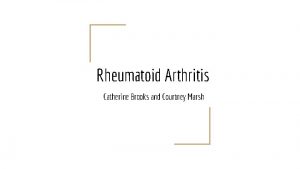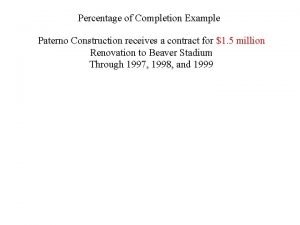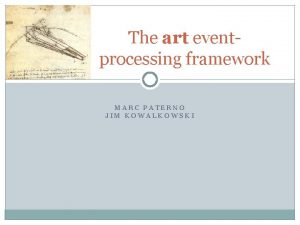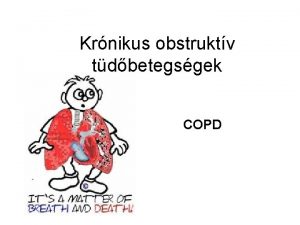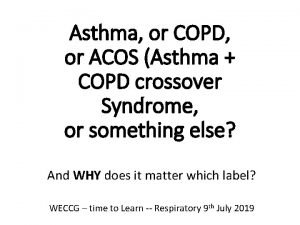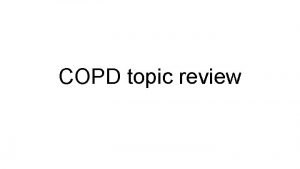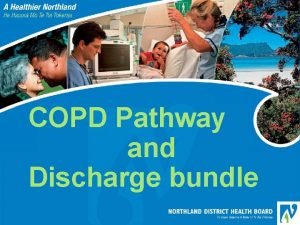COPD Courtney Pearce Jenna Paterno WHAT IS COPD





















- Slides: 21

COPD Courtney Pearce & Jenna Paterno

WHAT IS COPD? Chronic obstructive pulmonary disease is a progressive disease that limits airflow through either inflammation of the lining of the bronchial tubes (known as bronchitis) or destruction of alveoli (known as emphysema). Both conditions coexist as part of COPD.

ETIOLOGY Cigarette smoking is the number one cause of COPD The longer and heavier a person smokes the greater the chance of developing bronchitis People can also develop bronchitis from second hand smoke

CASE STUDY Stella Bernhardt 62 years old Caucasian, Female 5’ 3”, Wt. 119 Pounds BMI of 21. 1 kg/m 2 Married to a 68 year old man who has PMH of CAD Completed two years of college Retired office manager for an independent insurance agency

PATIENT HISTORY 5 years ago was diagnosed with stage 1 COPD (emphysema) History of bronchitis and upper respiratory infections during winter months for most of adult life No surgeries Medication: � Combivent (metro dose inhaler) 2 inhalations 4 X daily Smoked for 46 years- stopped a year ago Avoids Milk- says she has heard it increases mucus production Mother and 2 aunts died from lung cancer

PHYSICAL EXAM BP: 130/88 - pre hypertensive Very mild pitting edema (+1) Decreased breath sounds in chest/lungs Percussion hyperresonant (due to COPD) Prolonged wheezing

Normal Levels Mrs. Bernhardt Protein (g/d. L) 6 -8 5. 8 Albumin (g/d. L) 3. 5 -5 3. 3 WBC (x 103/mm 3) 4. 8 -11. 8 15 RBC (x 106/mm 3) 4. 2 -5. 4 4 Hemoglobin (g/d. L) 12 -15 11. 5 Hematocrit (%) 37 -47 35% p. H 7. 35 -7. 45 7. 29 p. CO 2 (mm Hg) 35 -45 50. 9 SO 2 % >95 92

NUTRITION HISTORY

TIPS IN CONSUMING MORE CALORIES Smaller but more frequent meals Resting before meals Social Setting Breathing exercise before and while eating Plan medications and breathing treatments around meals Sitting upright to prevent aspiration Trying to use oxygen at meal times Modified diet

NUTRITION NEEDS BMI: 21. 2 kg/m 2 %UBW: (100 x 119)/150 = 79. 3 % Estimated energy needs: 10 x 54 kg + 6. 25 x 160 cm -5 x 62 +5= 1235 kcals 1235 X 1. 2= 1482 kcals/day 1235 X 1. 4= 1729 kcals/day

PROTEIN 1. 2 -1. 7 g/kg of protein is necessary to maintain or restore lung and muscle strength as well as promote immune function 54 kg X 1. 5= 81 g 54 kg X 1. 7= 91. 8 g 81 g-92 g of Protein

NUTRITION CONCERN Monitor glucose levels to be able to successfully wean patients off ventilation The higher the level of glucose the higher the CO 2 production

PES STATEMENT Decreased nutrient needs of glucose (NI-5. 4) related to high levels of CO 2 production in the body as evidence by lab results of 32 m. Eq/L Inadequate energy intake (NI 4. 1)related to poor nutrition practices as evidence by 24 -hour diet recall and patients complaint of difficulty eating

PES #1 Goal: Decrease levels of glucose Intervention: Replace at least 16 ounces of Pepsi with 16 ounces of carbonated water infused with fruit

PES #2 Goal: Increase caloric intake by about 500 calories Intervention: Consume about 500 more calories by adding more food and shakes that are dense in nutrients such as smoothies and Ensure with at least one meal a day.

MRS. BERNHARDT’S 2 ND VISIT BACK Weight has decreased to 116 pounds Has had trouble adjusting to medications and oxygen at home so she hasn’t felt like eating much Hungriest in the morning and usually too tired to eat by dinner time



WHAT DO YOU THINK MRS. BERNHARDT SHOULD DO TO IMPROVE HER NUTRITION?

PES STATEMENT Protein deficiency (NI-5. 7. 1) related to poor nutrition of 27 -47 g of protein as evidence by 24 -hour diet recall and fatigue Goal: Increase protein intake Intervention: Consume about 60 more grams of protein by adding snacks in between meals that are protein rich such as peanut butter/ nut butter on toast, yogurt, cottage cheese, and eggs.

SOURCE American lung association. (n. d. ). Retrieved from http: //www. lung. org/lung-disease/copd/living-with-copd/copdmanagement-tools. html Nelms, M. Long, S. & Lacey, K. (2009). Medical nutrition therapy: A case study approach. Belmont, CA: Wadsworth, Cengage Learning. Nelms, M. Sucher, K. Lacey, K. & Roth, S. pathophysiology. Belmont, CA: Wadsworth What is copd? . (2013, July 31). Retrieved from http: //www. nhlbi. nih. gov/health-topics/copd/ (2009). Nutrition therapy &
 Paterno-filiales
Paterno-filiales Enzo paterno
Enzo paterno Don pearce
Don pearce Pygmalion act 3
Pygmalion act 3 Steve pearce psychiatrist
Steve pearce psychiatrist Pearce and robinson swot analysis
Pearce and robinson swot analysis Dr. adrian anil
Dr. adrian anil Marvel studios founded
Marvel studios founded Understanding trans health
Understanding trans health Ali rhodes
Ali rhodes Chris pearce dfo
Chris pearce dfo Randall pearce
Randall pearce Courtney douglass
Courtney douglass Schlossberg's transition theory
Schlossberg's transition theory Courtney eccles
Courtney eccles Courtney clawson
Courtney clawson Courtney killion
Courtney killion Courtney christina
Courtney christina Courtney marsh md
Courtney marsh md Courtney bohannon
Courtney bohannon Courtney courter
Courtney courter Courtney bass mediator
Courtney bass mediator
